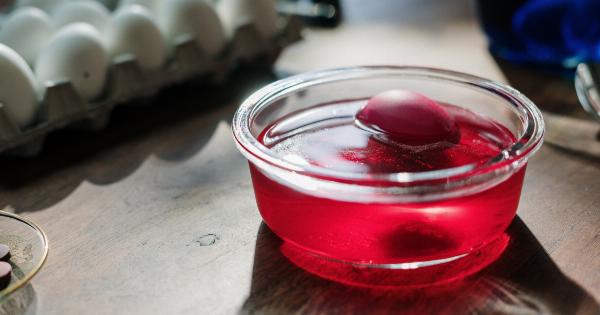Eggs are a staple in many households, whether eaten as a standalone item or used as an ingredient for baking or cooking. However, it can be difficult to tell if eggs have gone bad simply by looking at them.
Here are five ways to determine if your eggs are still fresh:.
1. Check the Expiration Date
The easiest way to tell if your eggs have gone bad is to check the expiration date on the carton. Most cartons have a sell-by or expiration date printed on either the top or bottom.
It is recommended that you use the eggs before this date, although they may still be safe to consume for a few days after the expiration date.
2. Do an Egg Float Test
Another way to test if your eggs are still fresh is to do an egg float test. Fill a bowl with water and gently place the egg in the water. If the egg sinks to the bottom and lays flat on its side, it is still fresh.
If the egg stands up on one end at the bottom, it is still safe to eat but should be used as soon as possible. If the egg floats to the top, it has gone bad and should be discarded.
3. Sniff the Egg
One of the easiest ways to tell if an egg has gone bad is by giving it a sniff. If it has a strong, unpleasant odor, it is spoiled and should be thrown away.
Fresh eggs have a very mild odor, while older eggs begin to smell bad as they start to deteriorate.
4. Check for Cracks or Damage
Eggs that are cracked or have other damage to the shell may be more likely to spoil quickly. This is because bacteria and air can enter the egg through the cracks, causing it to go bad faster.
Always inspect your eggs for any damage before purchasing or using them.
5. Do a Crack Test
If you are unsure if an egg is fresh, you can also do a crack test. Crack the egg into a bowl or onto a plate and examine it closely. Fresh eggs have a yolk that sits up high and a thick, viscous egg white that doesn’t spread out too much.
Older eggs have a flatter yolk that breaks easily and a thinner, more watery egg white that spreads out more.
By using these five methods, you can easily determine if your eggs are still fresh or have gone bad. Always be sure to discard any eggs that are questionable, as eating spoiled eggs can lead to food poisoning.































